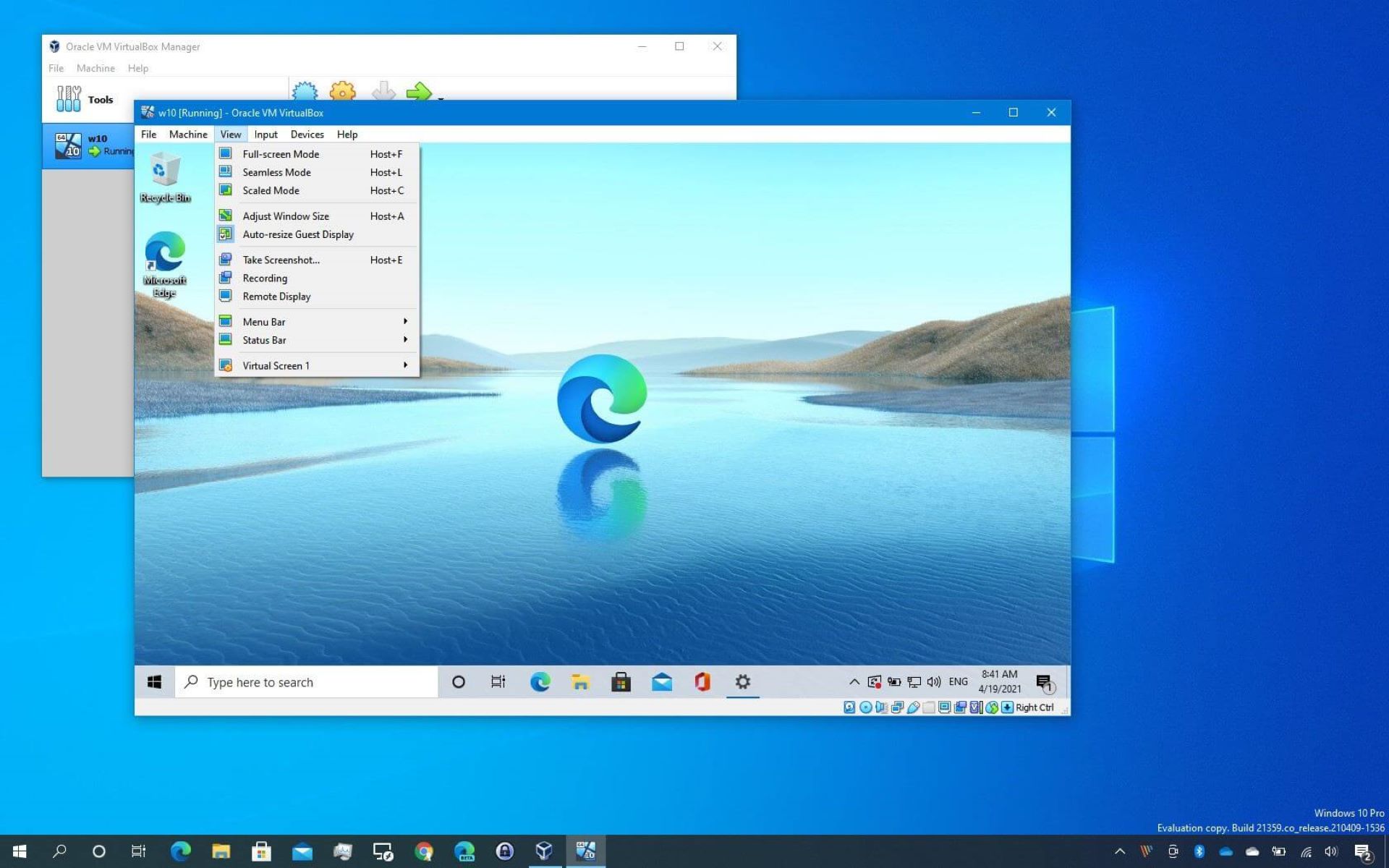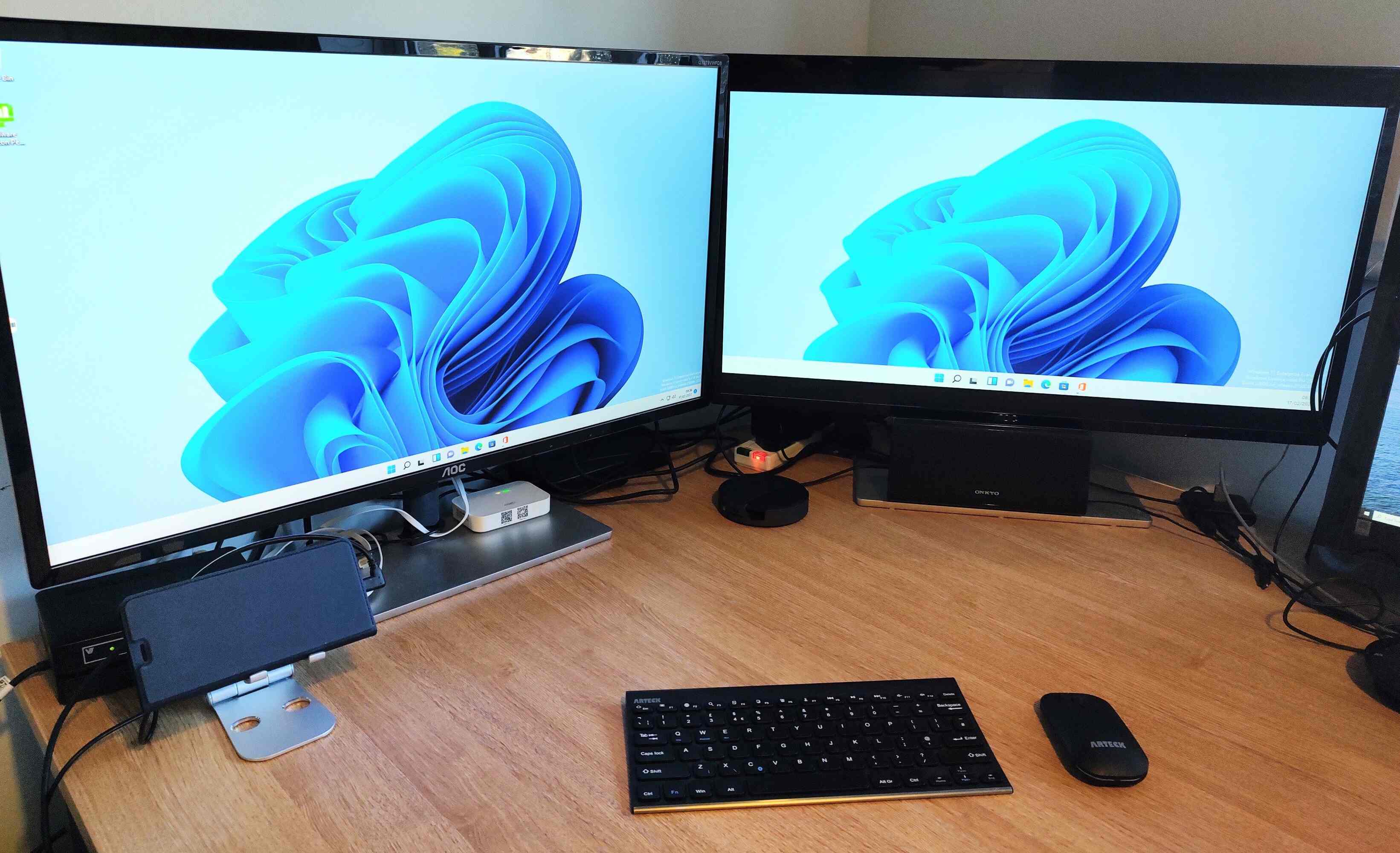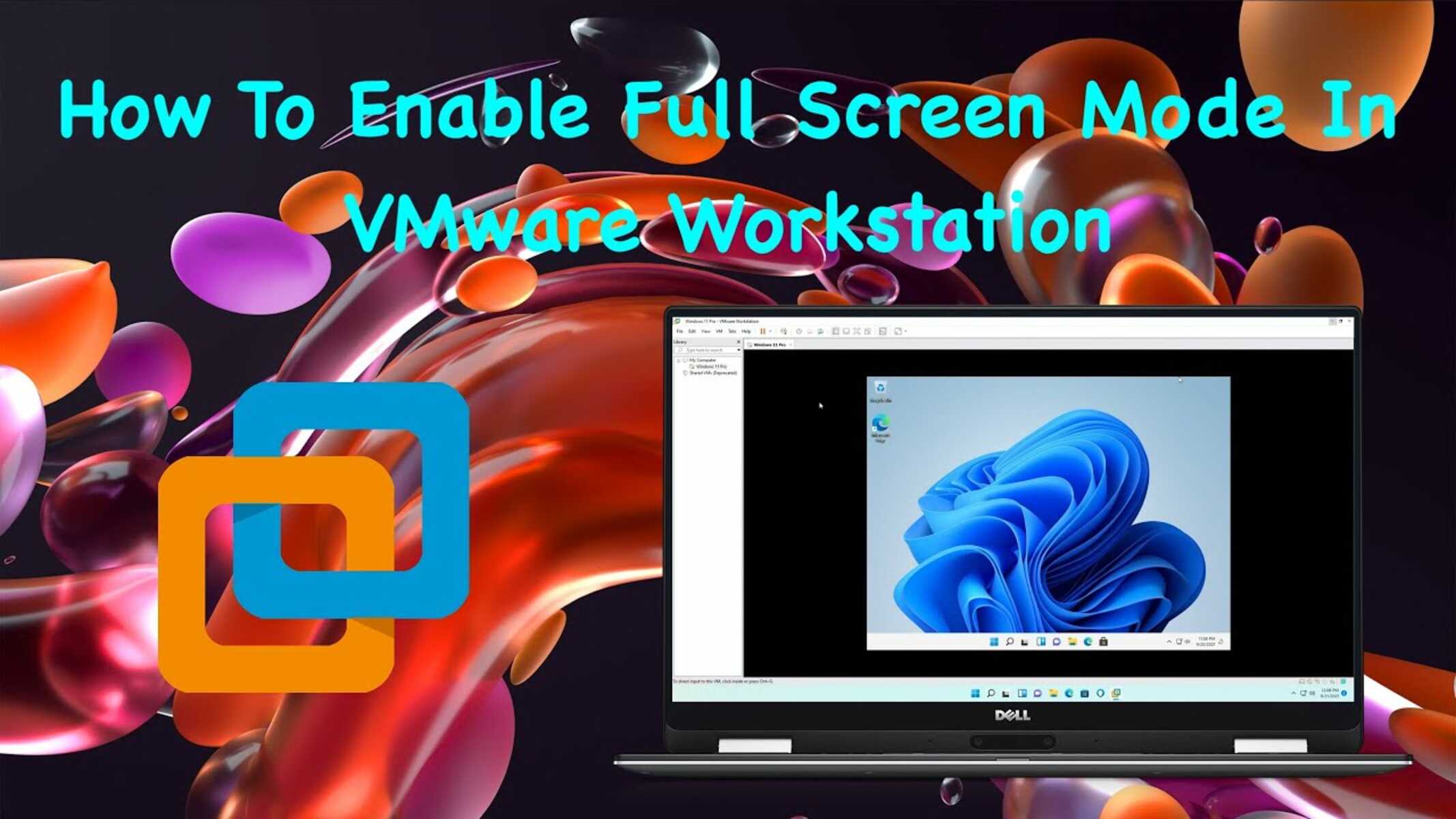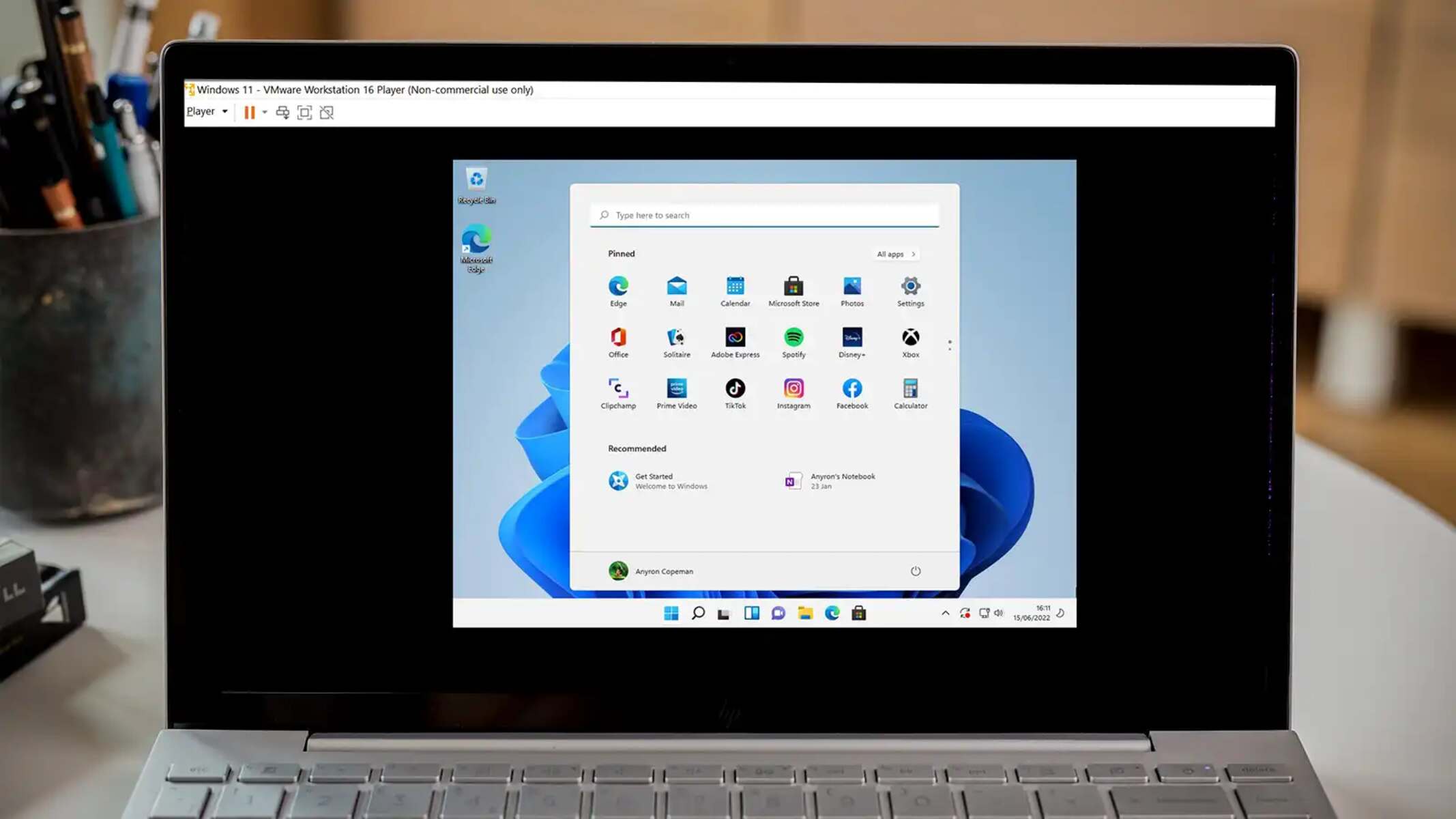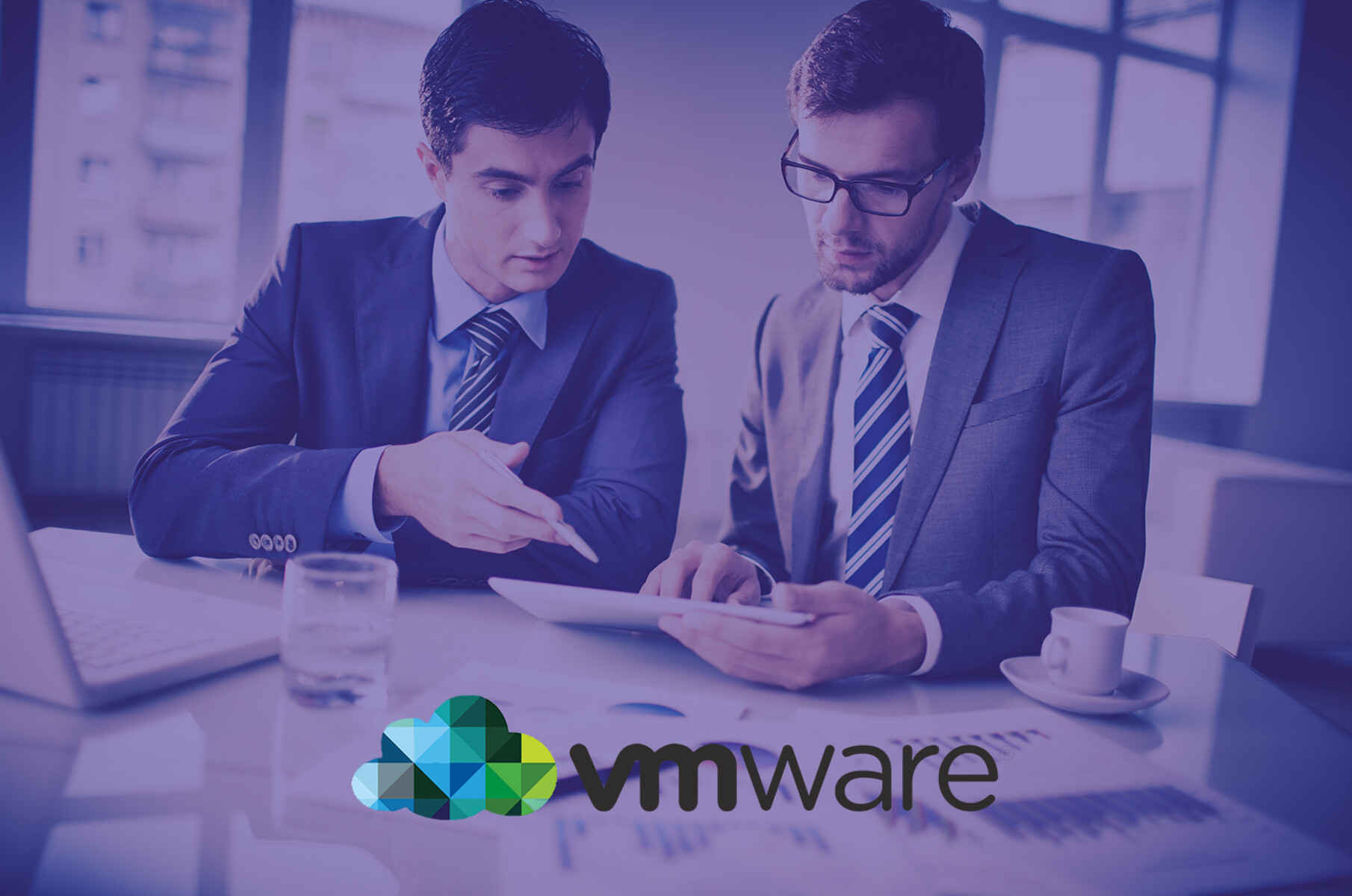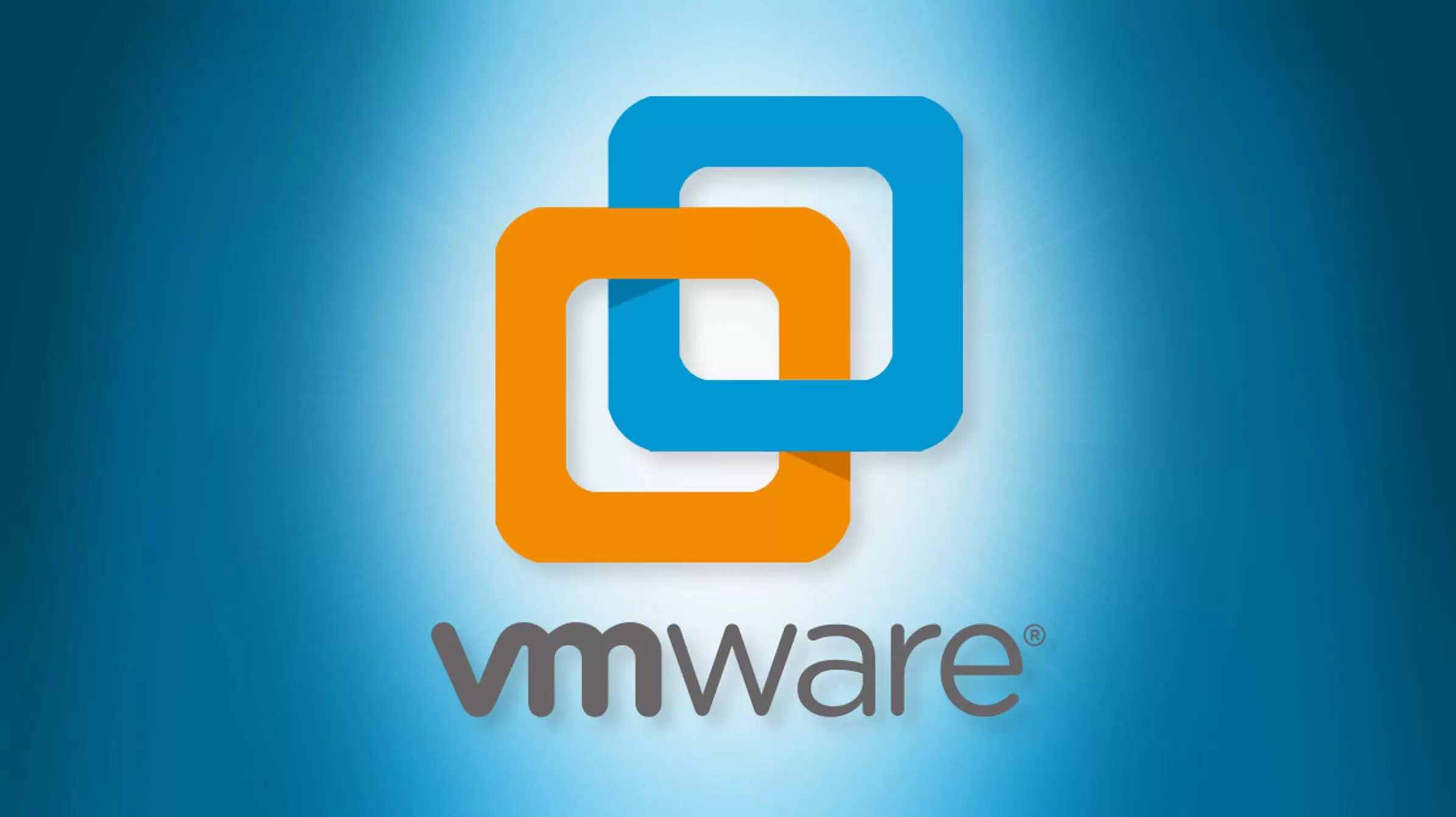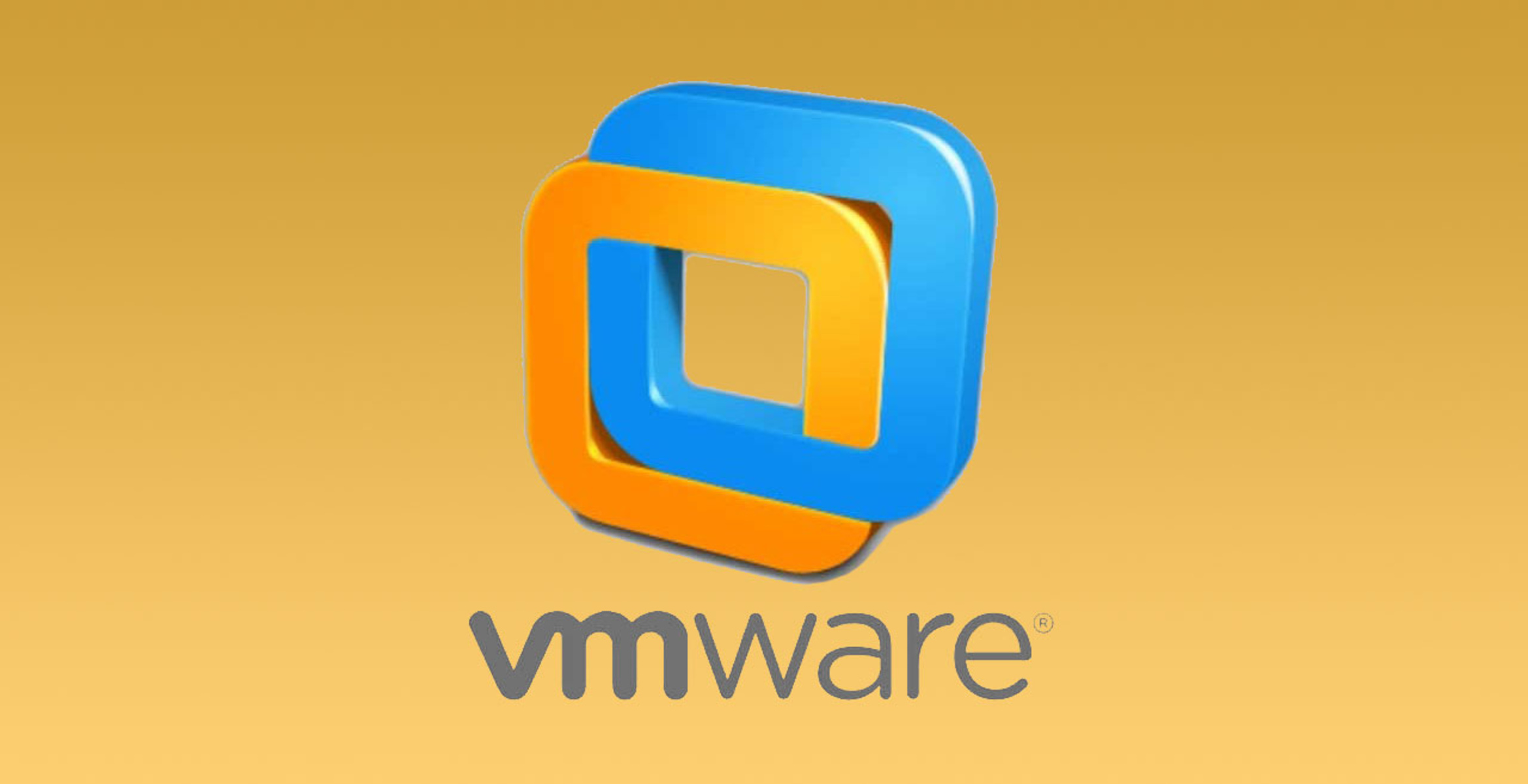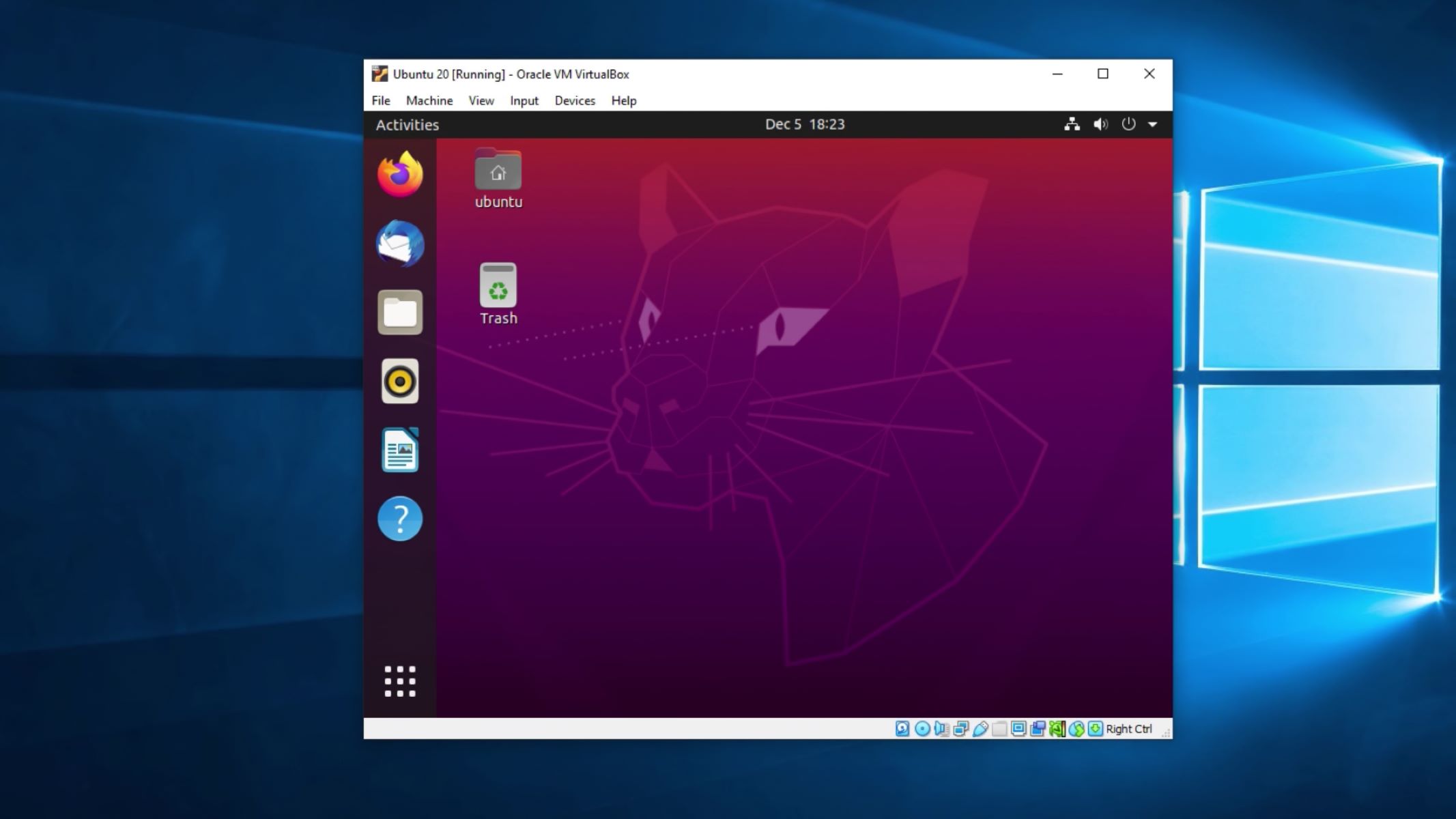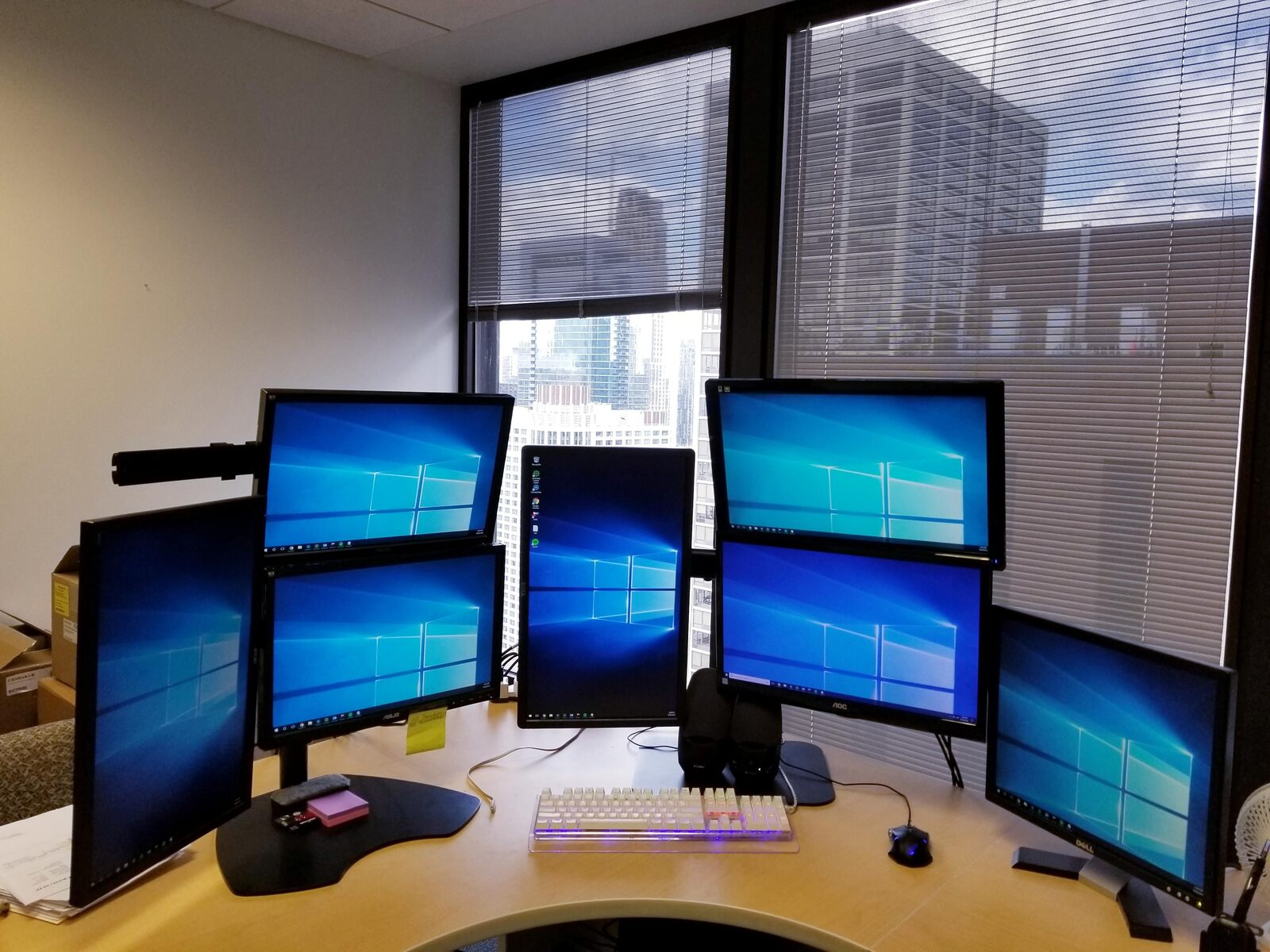Introduction
A virtual machine allows you to run multiple operating systems on a single physical computer. It provides a convenient way to test software, run applications in different environments, or create isolated systems for security purposes. When working with a virtual machine, you have the option to use it in full screen mode, which maximizes the virtual machine window to fill your entire desktop screen.
Using a virtual machine in full screen mode offers several benefits. Firstly, it provides a more immersive and seamless experience, as the virtual machine’s operating system takes over your entire screen, eliminating distractions from your host system. This can be especially useful when working with graphical-intensive applications or running multiple programs simultaneously.
Secondly, running a virtual machine in full screen mode allows you to utilize the entire screen real estate, enabling you to view more content and work more efficiently. This is especially beneficial when working with large files, spreadsheets, or engaging in multitasking activities.
Lastly, full screen mode can enhance the performance of your virtual machine, as it prioritizes resources and optimizes the display settings to deliver a smoother and more responsive experience. By dedicating the entire screen to the virtual machine, it reduces the strain on your host system, enabling your virtual machine to run more efficiently and effectively.
Now that you understand the benefits of using a virtual machine in full screen mode, let’s dive into the steps you need to follow to achieve this setup. Whether you are new to virtual machines or already have experience with them, this guide will help you make the most out of running your virtual machine in full screen mode.
Understand the benefits of using virtual machines in full screen mode
Using a virtual machine in full screen mode offers several advantages that can enhance your user experience and productivity. Here are some key benefits to consider:
- Immersive Experience: Working in a full screen virtual machine environment provides a more immersive experience by eliminating distractions from your host system. With the virtual machine taking over your entire screen, you can focus solely on the tasks and applications within the virtual environment.
- Maximized Screen Real Estate: Full screen mode allows you to utilize the entire screen, giving you more space to view and interact with your virtual machine. This is especially helpful when working on projects that require multiple windows or when using applications that have extensive toolbars or menus.
- Enhanced Multitasking: Running a virtual machine in full screen mode enables seamless multitasking between your host and virtual machine. You can switch between the host and virtual machine effortlessly, making it easy to access files or applications on both systems without the need for resizing or minimizing windows.
- Improved Performance: By dedicating the entire screen to the virtual machine, full screen mode optimizes the allocation of system resources, resulting in improved performance. This allocation prioritizes the virtual machine, allowing it to run more efficiently and effectively.
- Increased Privacy and Security: When using a virtual machine in full screen mode, you benefit from enhanced privacy and security. As the virtual machine operates independently from the host system, any potential malware or unauthorized access on the host system is isolated from the virtual environment, providing an additional layer of protection.
Understanding these benefits can help you make an informed decision on whether to use your virtual machine in full screen mode. Whether you are working on complex projects, need to test software, or require a secure environment for sensitive tasks, utilizing the full screen mode in your virtual machine can significantly enhance your overall experience and productivity.
Check if your virtual machine software supports full screen mode
Before you can use a virtual machine in full screen mode, it’s important to ensure that your virtual machine software supports this feature. Most popular virtual machine software, such as VMware Workstation, VirtualBox, and Parallels Desktop, offer built-in support for full screen mode.
To check if your virtual machine software supports full screen mode, follow these steps:
- Launch your virtual machine software. This will open the main interface of the software.
- Look for the option to view or modify display settings. The location of this option may vary depending on the software you are using. It is usually found in the settings or preferences menu.
- Within the display settings, check for an option related to full screen mode or maximizing the virtual machine window to fit the screen.
- If you find the mentioned option, it means that your virtual machine software supports full screen mode. Take note of any specific instructions or keyboard shortcuts provided to enter or exit full screen mode.
- If you do not find any option related to full screen mode, it is likely that your virtual machine software does not support this feature. In this case, consider upgrading to a newer version of the software or switching to a different virtual machine software that offers full screen mode.
Remember, it is essential to have the latest version of the virtual machine software installed to ensure compatibility and access to the latest features. Upgrading your software can also provide performance enhancements and security updates.
Once you have confirmed that your virtual machine software supports full screen mode, you can proceed with the necessary steps to install or update the software, set up your virtual machine, and start using it in full screen mode.
Install or update the virtual machine software
Before you can begin using a virtual machine in full screen mode, you need to install or update the virtual machine software on your computer. This software acts as a platform for running virtual operating systems and managing virtual machine configurations. Here are the steps to install or update your virtual machine software:
- Visit the official website of the virtual machine software you want to use. Popular options include VMware Workstation, VirtualBox, and Parallels Desktop.
- Download the latest version of the software from the website. Make sure to choose the version that is compatible with your operating system.
- Double-click on the downloaded file to start the installation process. Follow the on-screen instructions to complete the installation. This may include accepting the license agreement and choosing the installation location on your computer.
- If you already have the virtual machine software installed, but it is not up to date, you can check for updates within the software itself. Look for an option like “Check for Updates” or “Software Update” in the settings or preferences menu.
- If updates are available, follow the prompts to download and install them. This will ensure that you have the latest features, bug fixes, and security enhancements.
- Once the installation or update process is complete, launch the virtual machine software to verify that it is running properly.
It is important to note that different virtual machine software may have slightly different installation processes. Always refer to the documentation provided by the software’s manufacturer for specific installation instructions.
By installing or updating your virtual machine software, you are ensuring that you have the necessary tools and capabilities to run your virtual machine in full screen mode. Once the software is successfully installed or updated, you can move on to the next steps of setting up your virtual machine and utilizing the full screen mode feature.
Set up your virtual machine
Once you have installed or updated the virtual machine software, it’s time to set up your virtual machine. The setup process involves creating a new virtual machine or importing an existing one, and configuring its specifications. Here are the steps to set up your virtual machine:
- Open the virtual machine software and navigate to the option for creating a new virtual machine. This option is usually located in the main interface or file menu.
- Choose the operating system you want to install on your virtual machine. This could be Windows, macOS, Linux, or any other supported operating system.
- Specify the amount of RAM you want to allocate to your virtual machine. Consider the requirements of the operating system and applications you plan to run, and allocate enough memory for optimal performance.
- Allocate storage space for your virtual machine. This involves selecting the location where the virtual machine files will be stored and defining the amount of disk space it should have. Ensure that you have enough free disk space on your computer to accommodate the virtual machine.
- Configure additional settings such as network options, display settings, and input preferences. These settings may vary depending on the virtual machine software you are using. Refer to the software’s documentation for specific guidance.
- Once you have completed the setup process, save the configuration settings and proceed to the next step of starting your virtual machine.
If you already have an existing virtual machine, you can skip the creation step and instead import the virtual machine into the software. This typically involves locating the virtual machine file and following the software’s import wizard or menu options to import it.
Setting up your virtual machine is a crucial step as it determines the resources and environment in which your virtual machine will run. By properly configuring the specifications and settings, you can ensure optimal performance and compatibility with the operating system and applications you intend to use.
With your virtual machine set up, you are now ready to move on to starting the virtual machine and entering full screen mode.
Start your virtual machine
Once you have set up your virtual machine, it’s time to start it. Starting your virtual machine involves launching the virtual machine software and initiating the boot process for the installed operating system. Here are the steps to start your virtual machine:
- Open the virtual machine software on your computer. This will bring up the main interface of the software.
- Locate your virtual machine from the list of available virtual machines within the software. If you have just created a new virtual machine, it should be listed there. If you have imported an existing virtual machine, find it in the list.
- Select the desired virtual machine and click on the “Start” or “Power On” button. This will initiate the boot process for the virtual machine.
- As the virtual machine boots up, it will display the operating system loading screen. Depending on the operating system you have installed, this process may take a few moments.
- Once the boot process is complete, the virtual machine’s desktop will be displayed within the virtual machine software’s window.
At this point, your virtual machine is up and running. You can now proceed to the next step of entering full screen mode to maximize the virtual machine window and make the most of its capabilities and features.
It’s important to note that the specific steps may vary depending on the virtual machine software you are using. Refer to the software’s documentation for detailed instructions on starting and managing virtual machines within the specific software environment.
With your virtual machine started, you are one step closer to utilizing its full potential. In the next section, we’ll explore how to enter full screen mode to maximize your virtual machine window and enhance your user experience.
Enter full screen mode
Entering full screen mode allows you to maximize the virtual machine window to fill your entire desktop screen, providing a more immersive and focused working environment. Here’s how you can enter full screen mode on your virtual machine:
- Ensure that your virtual machine is running and its desktop is visible within the virtual machine software’s window.
- Look for the full screen mode option or button within the virtual machine software’s interface. It is typically represented by an icon that resembles a monitor or a window expanding to fill the screen.
- Click on the full screen mode option or button to enter full screen mode. Alternatively, you can use a specific keyboard shortcut mentioned in the software’s documentation, such as “Ctrl + Alt + Enter” or “Command + F” on macOS.
- Upon entering full screen mode, the virtual machine window will expand to fill your entire desktop screen, effectively hiding the surrounding desktop or other open applications.
- You will now be able to interact with your virtual machine’s operating system and applications as if they were running on a dedicated physical computer.
While in full screen mode, you can utilize all the features and functionalities of your virtual machine without visual distractions or limitations. The full screen experience enhances your productivity by providing a seamless and uncluttered working environment.
To exit full screen mode and return to the virtual machine software’s windowed view, you can either click on the exit full screen icon or use the designated keyboard shortcut provided by the software. This will revert the virtual machine window back to its original size within the virtual machine software’s window.
Entering full screen mode is a simple yet powerful way to make the most out of your virtual machine setup. It maximizes your screen real estate and enhances your overall user experience, allowing you to fully immerse yourself in the virtual environment.
Next, we’ll explore useful keyboard shortcuts that can further enhance your control and navigation while working in full screen mode.
Exit full screen mode
Exiting full screen mode allows you to return to the windowed view of your virtual machine, giving you access to your host system’s desktop and other applications. If you no longer require the full screen experience, here’s how you can exit full screen mode:
- If you are using a virtual machine software with a toolbar or menu options, locate the option to exit full screen mode. It is typically represented by an icon or text indicating the action to exit full screen.
- Click on the exit full screen option or button to return to the windowed view. Alternatively, you can use the keyboard shortcut specified by the virtual machine software. Common keyboard shortcuts include “Ctrl + Alt + Enter” or “Command + F” on macOS.
- Upon exiting full screen mode, the virtual machine window will return to its original size within the virtual machine software’s window. This will give you access to your host system’s desktop and other applications, allowing you to multitask or switch between tasks easily.
Exiting full screen mode is a straightforward process that provides you with the flexibility to switch between the virtual machine and your host system seamlessly. Whether you need to access files on your host system, check emails, or perform any other tasks outside the virtual machine, exiting full screen mode gives you the freedom to do so.
It’s important to note that different virtual machine software may have slightly different methods to exit full screen mode. Refer to the software’s documentation for specific instructions and shortcuts.
By understanding how to exit full screen mode, you can transition between the immersive full screen experience and your host system with ease. In the next section, we’ll explore some useful keyboard shortcuts that can enhance your control and navigation while working in full screen mode.
Use keyboard shortcuts for full screen control
Keyboard shortcuts are a great way to enhance your control and navigation while working in full screen mode. They allow you to perform various actions and operations without the need to rely on mouse clicks or accessing menu options. Here are some useful keyboard shortcuts for full screen control:
- Enter/Exit Full Screen: Many virtual machine software provides specific keyboard shortcuts to enter and exit full screen mode. For example, in VMware Workstation, you can use “Ctrl + Alt + Enter” to enter full screen and “Ctrl + Alt” to exit full screen. Be sure to check the documentation of your virtual machine software for the correct shortcuts.
- Switch between Host and Virtual Machine: To switch between the virtual machine and your host system without exiting full screen mode, you can use a keyboard combination like “Ctrl + Alt” or “Command + Tab” on macOS. This allows for quick multitasking between different systems or applications.
- Adjust Display Settings: Some virtual machine software provide shortcuts to adjust display settings within full screen mode. This includes changing the screen resolution, adjusting the color depth, or enabling/disabling multiple monitor support. Consult the documentation of your virtual machine software for the specific shortcuts.
- Access Menu or Toolbar Options: In certain virtual machine software, you can use a keyboard combination like “Ctrl + Alt + Space” to access the menu or toolbar options while in full screen mode. This allows you to perform various actions such as saving, printing, or taking screenshots without exiting full screen.
- Ctrl + Alt + Del: The “Ctrl + Alt + Del” combination is often used to perform certain functions within a virtual machine, such as opening the Task Manager or locking the screen. Some virtual machine software provide alternative shortcuts for these operations to avoid conflict with the host system.
These are just a few examples of keyboard shortcuts that can improve your full screen control. The availability and functionality of shortcuts may vary depending on the virtual machine software you are using. Make sure to refer to the software’s documentation to discover additional shortcuts and customize them according to your preferences.
By utilizing keyboard shortcuts, you can navigate and control your virtual machine efficiently without the need to rely solely on mouse clicks and menu options. These shortcuts can save you time and improve your overall workflow, enhancing the full screen experience.
In the next section, we will provide troubleshooting tips for common issues that you may encounter while using full screen mode in a virtual machine.
Troubleshooting tips for common issues
While using full screen mode in a virtual machine, you may encounter some common issues that can hinder your experience. Here are some troubleshooting tips to help you resolve these issues:
- Black Screen: If you encounter a black screen when entering full screen mode, try pressing the “Ctrl + Alt + Enter” (or equivalent) keyboard shortcut again. This may force the virtual machine to refresh its display and resolve the issue.
- Resolution Mismatch: In some cases, the resolution of your virtual machine may not match the resolution of your desktop screen, leading to display issues. Adjust the display settings within the virtual machine software to ensure that the resolution is set correctly for your screen.
- Inaccessible Host System: If you find that you cannot access your host system while in full screen mode, try using the “Ctrl + Alt” or “Command + Tab” keyboard shortcut to switch between the virtual machine and host system. This should restore your ability to interact with the host system.
- Unsupported Keyboard Shortcuts: Different virtual machine software may have different keyboard shortcuts or may not support certain shortcuts while in full screen mode. Refer to the documentation of your virtual machine software to ensure you are using the correct shortcuts and to learn about any limitations or alternatives.
- Host System Freezing: If your host system becomes unresponsive or freezes while using full screen mode, try exiting full screen mode to release system resources. This can help alleviate the strain on your host system and restore its functionality.
- Updated Graphics Drivers: Ensure that your computer’s graphics drivers are up to date. Outdated or incompatible drivers can cause display issues, especially when using full screen mode. Visit the website of your graphics card manufacturer to download and install the latest drivers.
- Virtual Machine Software Updates: Keep your virtual machine software up to date by regularly installing software updates. Updates often include bug fixes, performance improvements, and compatibility enhancements that can help resolve issues related to full screen mode.
If you encounter any persistent issues with full screen mode in your virtual machine, it can be helpful to consult the documentation or support resources provided by your virtual machine software. Additionally, online forums and communities dedicated to virtualization can often provide valuable insights and solutions to specific issues.
By following these troubleshooting tips, you can overcome common issues and ensure a smooth experience while utilizing full screen mode in your virtual machine.
Now that you are equipped with troubleshooting knowledge, you can enjoy the immersive and productive environment that full screen mode offers. Let’s wrap up this guide and summarize the key takeaways.
Conclusion
Using a virtual machine in full screen mode offers a range of benefits, including an immersive experience, maximized screen real estate, enhanced multitasking, improved performance, and increased privacy and security. By understanding these advantages, you can make an informed decision and leverage the full potential of your virtual machine setup.
In this guide, we covered the essential steps to make your virtual machine run in full screen mode. You need to ensure that your virtual machine software supports full screen mode, install or update the software, set up your virtual machine with the desired specifications, start the virtual machine, and then enter full screen mode using the appropriate keyboard shortcut or menu option.
We also discussed how to exit full screen mode, use keyboard shortcuts for full screen control, and provided troubleshooting tips for common issues that may arise. These tips can help you overcome any challenges and ensure a smooth experience while working in full screen mode.
Remember to refer to the documentation and support resources provided by your virtual machine software for specific instructions and guidance tailored to your software version. Additionally, participating in online forums and communities dedicated to virtualization can offer valuable insights and solutions.
By utilizing full screen mode effectively, you can create an optimal working environment within your virtual machine and enhance your overall productivity. Whether you are developing software, testing applications, or need a secure environment for sensitive tasks, running your virtual machine in full screen mode can streamline your workflow and provide a seamless user experience.
So, dive into the world of virtual machines and embrace the full screen mode to unlock the possibilities it offers. Enjoy the benefits of an immersive, efficient, and secure working environment within your virtual machine setup!







